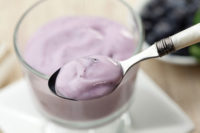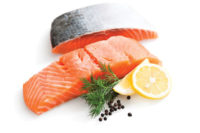Omega-3s Appear to Boost Tomato Benefits

Researchers from the University of Murcia in Spain report that two weeks of consuming the omega-3 enriched juice was associated with a reduction in levels of compounds called vascular adhesion molecule 1 (VCAM-1) and intercellular adhesion molecule 1 (ICAM-1), both of which are reported to play a role in the early development of atherosclerosis.
In addition, the omega-3 enriched juice was also associated with a reduction in levels of homocysteine, another risk factor for cardiovascular disease.
On the flip side, no changes were observed on blood lipid levels, added the Spanish scientists.
“Synergistic effects are suggested to occur between [omega-3 polyunsaturated fatty acids] and natural tomato bioactive compounds,” they wrote.
“This possibility of in vivo synergistic action should be further investigated to ascertain the underlying molecular mechanisms.”
Heart Health
A growing body of literature supports the heart health benefits of tomato extracts, and lycopene in particular. Only recently, South Korean scientists reported that supplements of lycopene may boost the body’s natural antioxidant defenses and protecting against DNA damage.
The heart health benefits of omega-3s are arguably even more impressive, having been first reported in the early 1970s by Dr. Jorn Dyerberg and his co-workers in The Lancet and The American Journal of Clinical Nutrition. To date, the polyunsaturated fatty acids (PUFAs) have been linked to improvements in blood lipid levels, a reduced tendency of thrombosis, blood pressure and heart rate improvements, and improved vascular function.
Study Details
The Murcia-based scientists recruited 18 healthy women aged between 35-55 and with a BMI ranging from 21-30kg/m2. Women were assigned to receive either plain tomato juice or the omega-3-enriched juice (providing a 250mg dose of EPA (eicosapentaenoic acid) and DHA (docosahexanoic acid)). Servings of both juice contained 25.6mg of lycopene and 181mg of polyphenols.
At the end of the study, neither group displayed changes to the blood lipid or cholesterol levels. However, the researchers did note a reduction on VCAM-1 in both groups, and a reduction of ICAM-1 levels only in the enriched juice group.
In addition, the omega-3-enriched juice was associated with a 21 percent decrease in blood levels of homocysteine.
“Overall, stronger positive amelioration of CVD risk factors was observed following the intake of n-3 PUFA-enriched juice than after plain tomato juice consumption, which suggested a possible synergistic action between n-3 PUFAs and tomato antioxidants,” they concluded.
Source: European Journal of Nutrition; Published online ahead of print, DOI: 10.1007/s00394-011-0225-0; “Effect of consumption of tomato juice enriched with n-3 polyunsaturated fatty acids on the lipid profile, antioxidant biomarker status, and cardiovascular disease risk in healthy women”; Authors: F. J. Garcia-Alonso, V. Jorge-Vidal, G. Ros and M. J. Periago.
From the August 9, 2011,NutraSolutions.
Looking for a reprint of this article?
From high-res PDFs to custom plaques, order your copy today!






